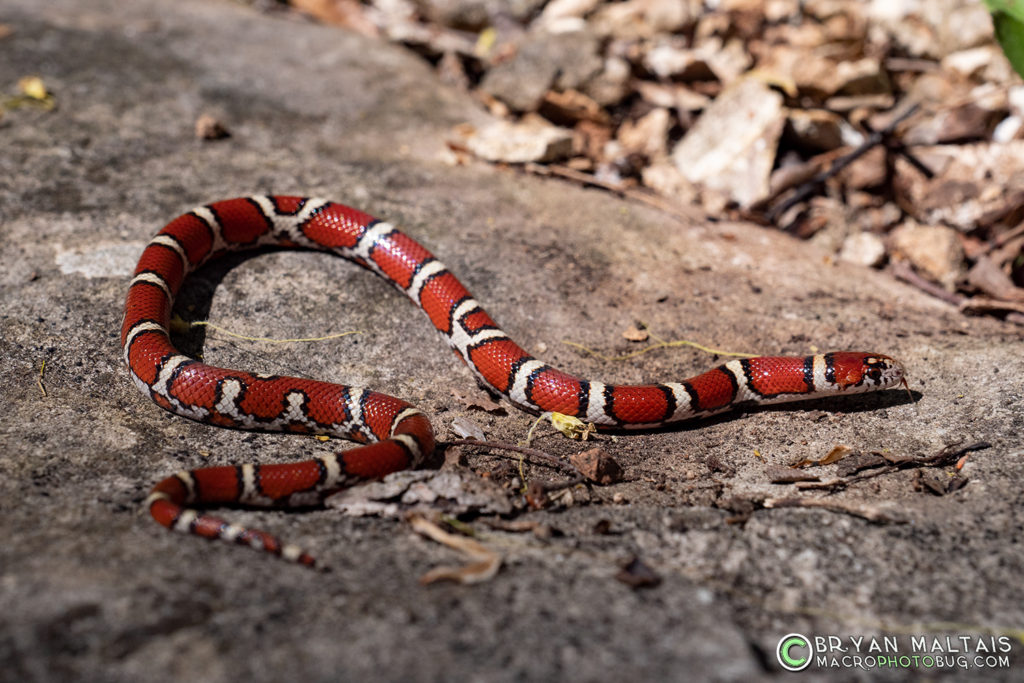
Red milk snakes may be over-collected for the pet trade at some localities.Įtymology: Lampropeltis – lampros (Greek) meaning bright, brilliant, radiant pelta (Latin) meaning small shield triangulum – triangulus (Latin) meaning ‘having three angles’ syspila – sys (Greek) together and spilos (Greek) spots.

Status: Not commonly seen, except perhaps in the Chicago region and portions of the Shawnee Hills, because of its secretive nature. Predators include birds of prey and mammals, but many more probably are killed on roads by vehicles.ĭistribution Notes: Probably occurs statewide, with triangulum in the northern third of the state, syspila in the southern third and an intergrade zone in the middle third. Diet includes small mammals, birds and bird eggs, reptiles and reptile eggs, frogs, and fish. The young hatch in August or early September at 20-25 cm TL. Mates in spring and lays 8-20 eggs in June in rotting logs, tree stumps, or other rotting vegetation. Natural History: Usually found in rotting logs, under bark of stumps, or under logs, rocks, and other surface debris. Habitat: A variety of habitats from rocky, wooded hillsides and glades to old fields and wetlands. syspila has 19-26 red blotches on the back and 4-8 red rings on the tail. triangulum has 33-46 brown blotches on the back alternating with 1-2 rows of spots on the side. Phillipsĭescription: Medium-sized (up to 110 cm TL) snake with variable color pattern. Milksnake, Woodford Co., IL photo by C.A.

Subspecies: Eight subspecies are currently recognized in North America, but only two are known from Illinois, Eastern Milksnake, L. Similar Species: Prairie kingsnake, Great Plains Ratsnake. See the Key to Illinois Snakes for help with identification. Key Characters: Black-bordered red or brown blotches or rings belly white with sharply contrasting black spots back scales smooth anal plate not divided. Systematic Biology 63:231-250.Milksnake, Johnson Co., IL photo by C.A. Coalescent species delimitation in milksnakes (genus Lampropeltis) and impacts on phylogenetic comparative analyses. Indiana Academy of Science, Indianapolis, IN. Reptiles and Amphibians of Eastern and Central North America. These snakes are members of the family Colubridae, which is represented by a total of 28 species in Indiana.Ĭonant, R. triangulum) without a subspecific designation. (2014) reorganized the taxonomy of this group and described several new species, recognizing all of Indiana's milksnakes as Eastern Milksnakes ( L. Indiana's milksnakes were once recognized as one of two subspecies-the Red Milksnake ( L. They may be found in dense forests and in open grasslands, but prefer edge habitat.

They are most common where prey populations (primarily rodents and lizards) are abundant and are commonly found under boards, sheet metal, and other debris around farms, junkyards, and in old fields. Northern Watersnakes are superficially similar, but have strongly keeled scales and lack patterning on their head.Įastern Milksnakes are found throughout Indiana but are only locally abundant. In northwestern Indiana, Eastern Foxsnakes are similar, but have slightly keeled scales and a more distinct head/neck. In western Indiana, Prairie Kingsnakes can be difficult to differentiate from this species, but they tend to be more robust with less vibrant/distinct coloration. Eastern Milksnakes are medium-sized snakes with most individuals growing to two to three feet (60 - 90 cm) long, and some reaching lengths of nearly four feet (1.2 m) long. Most juvenile Eastern Milksnakes have brighter red colors that fade to brown as they age. Eastern Milksnakes in southwestern Indiana are more typically white-gray with brilliant red blotches and extensive red coloration on the head. Most Indiana Eastern Milksnakes are gray to light brown with darker brown or red blotches/bands. This relatively common and widespread species is easily mistaken for the many other blotched snakes that occur in Indiana.


 0 kommentar(er)
0 kommentar(er)
